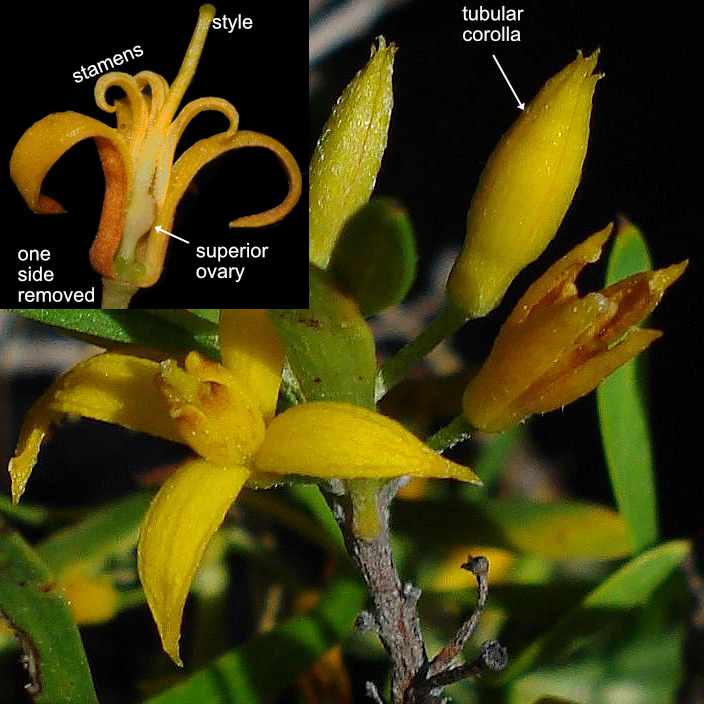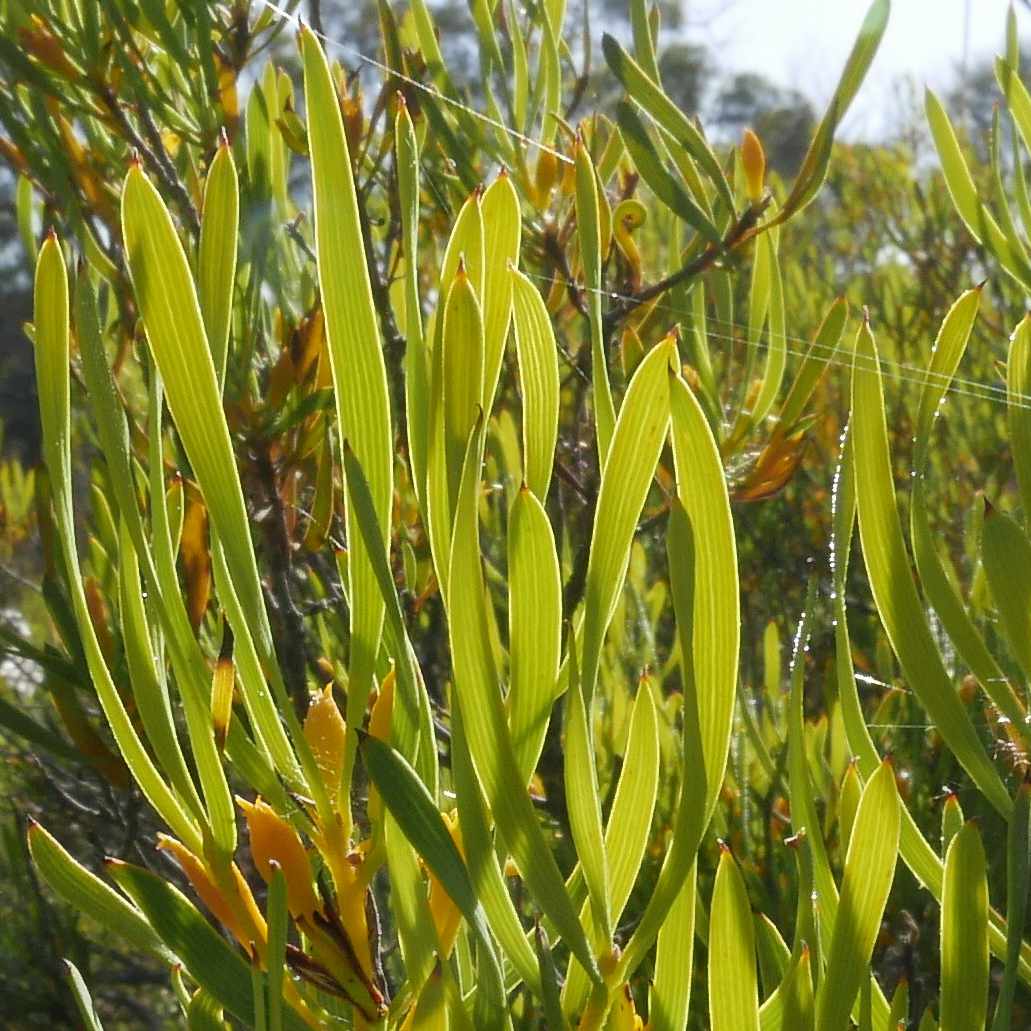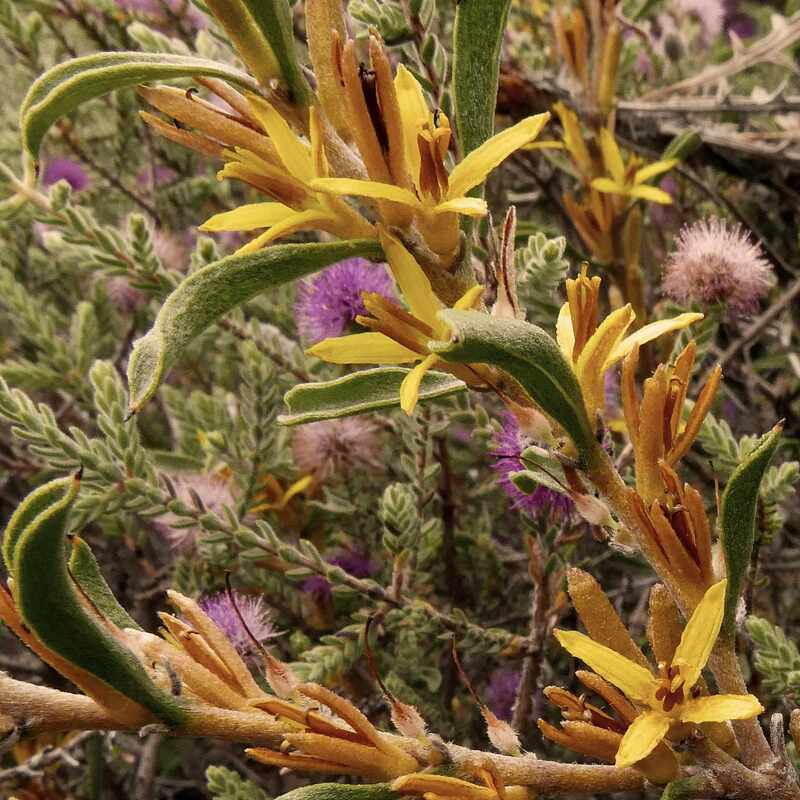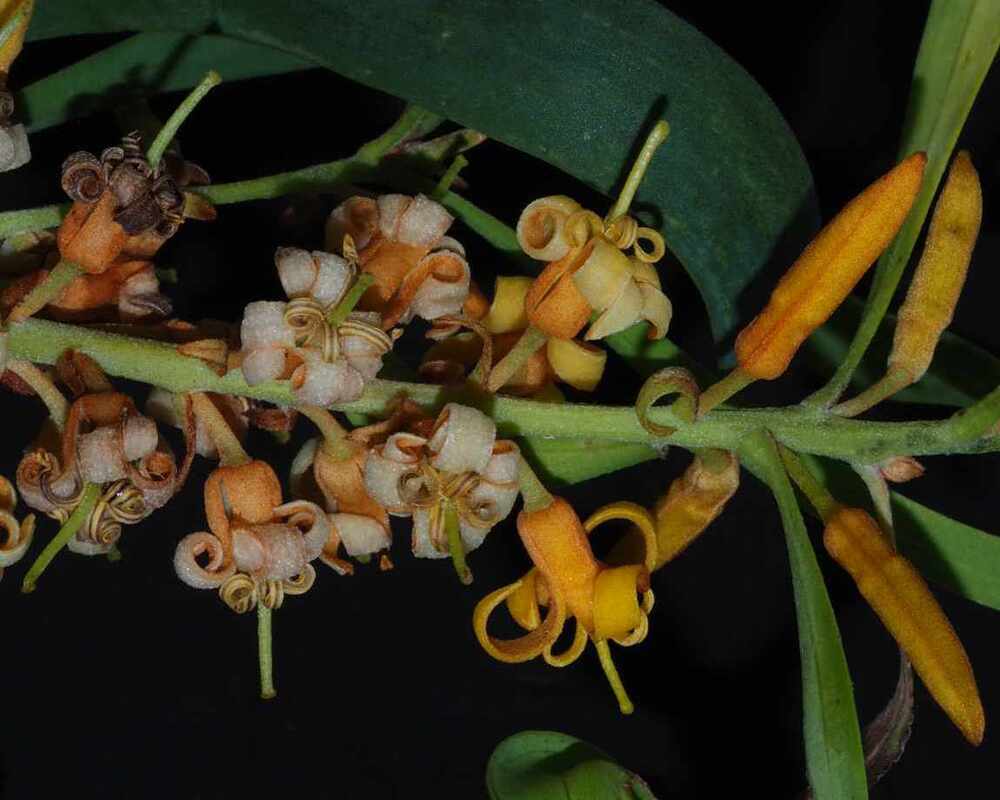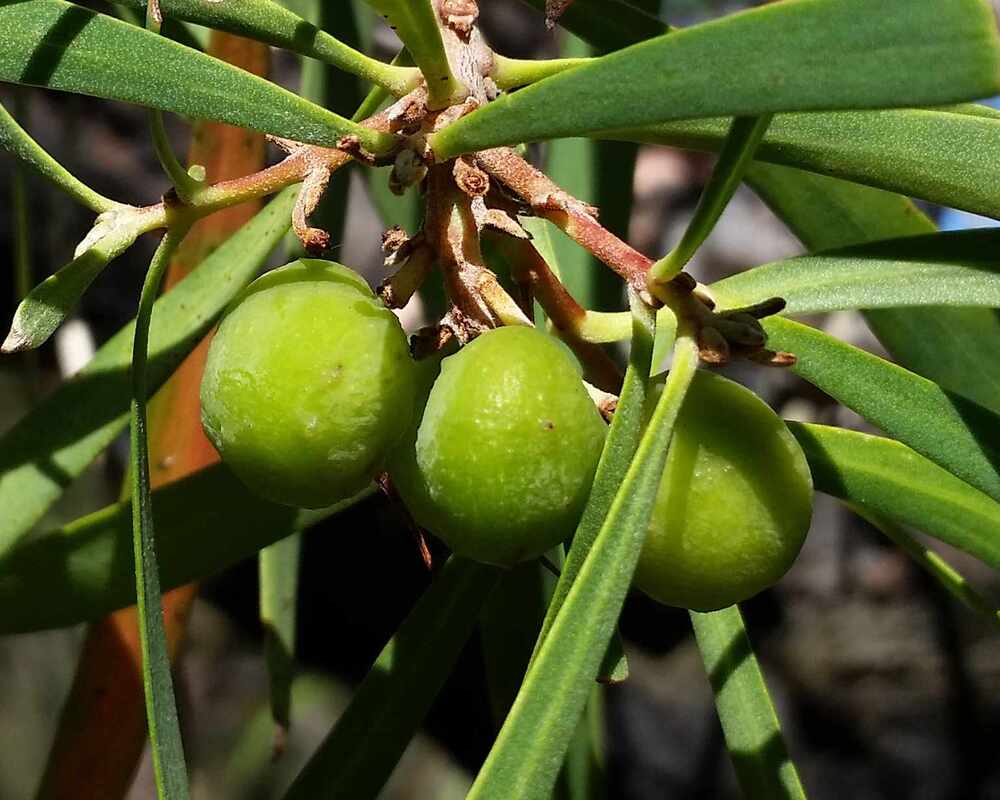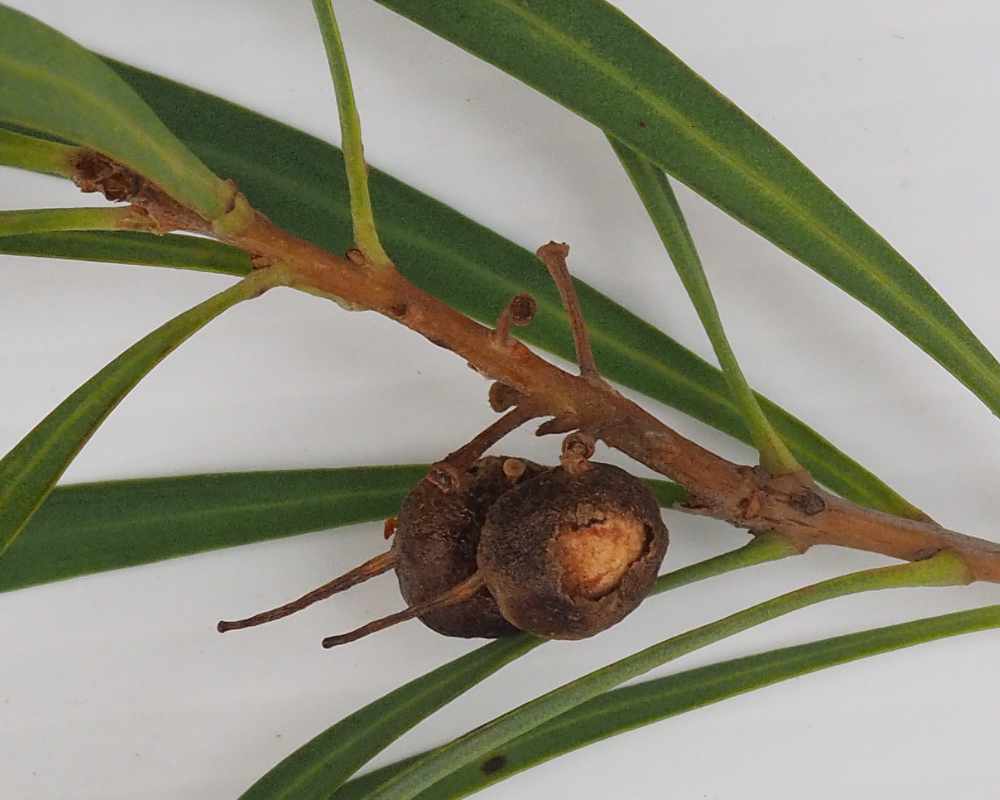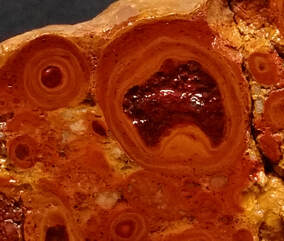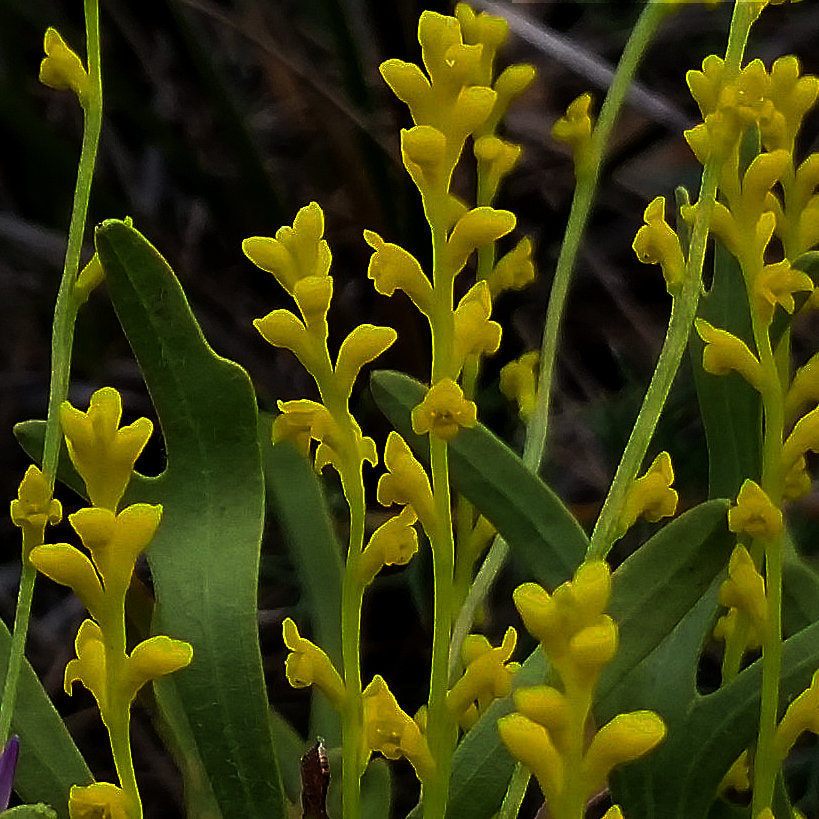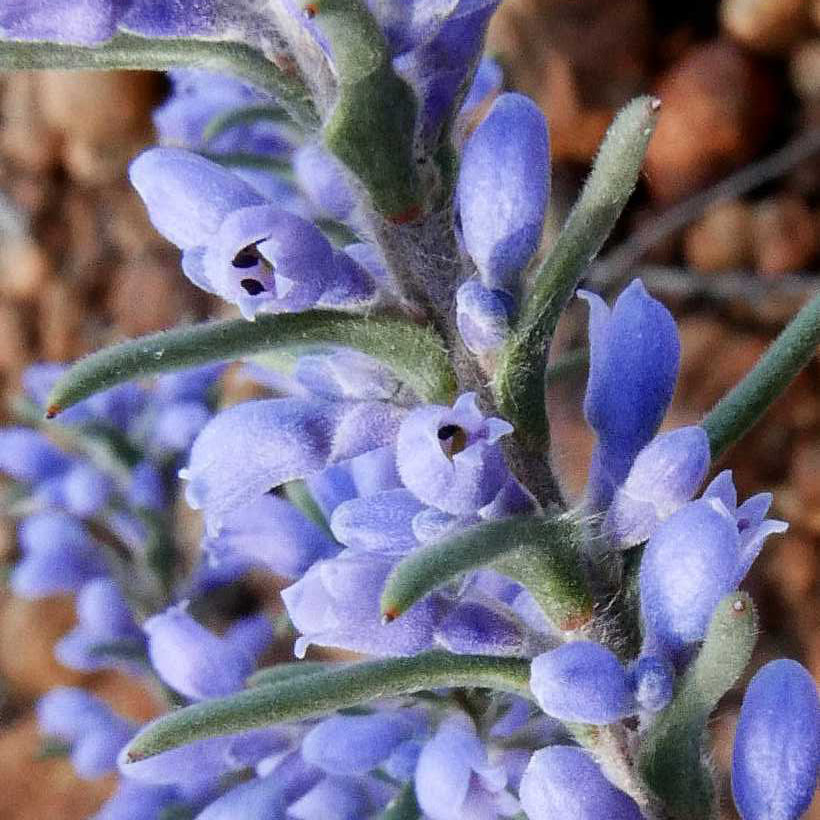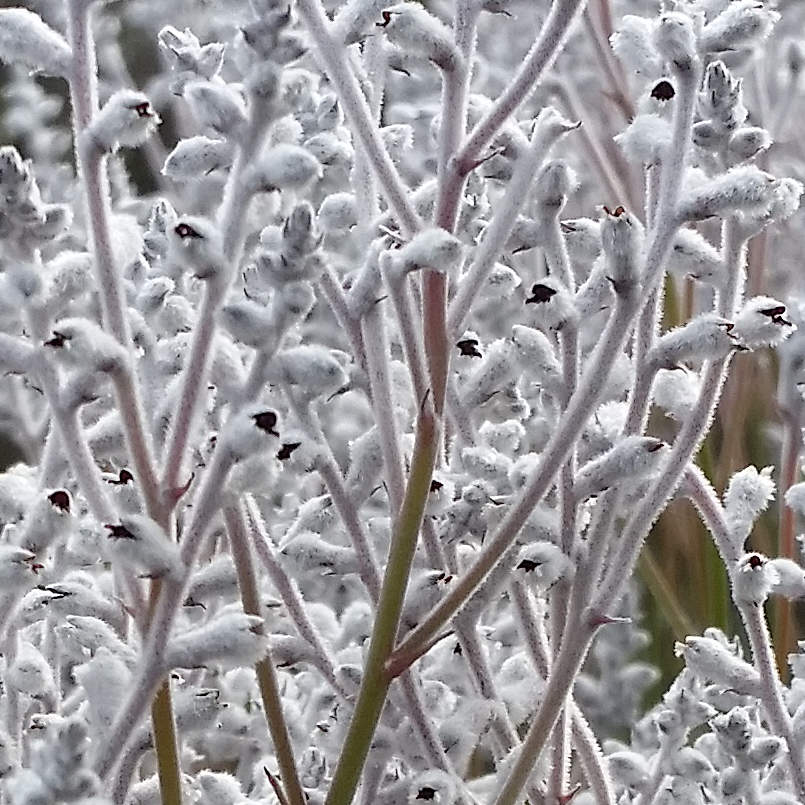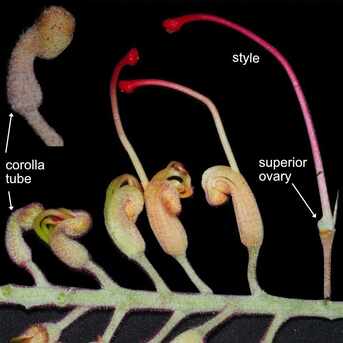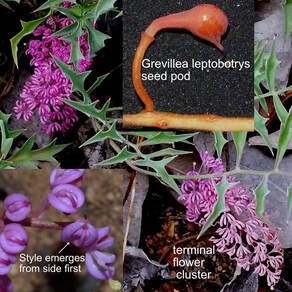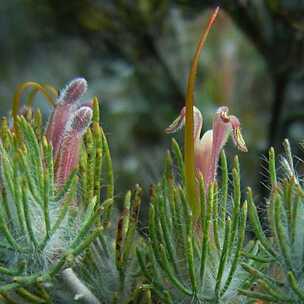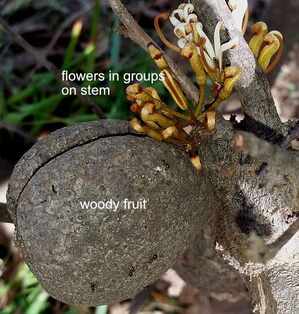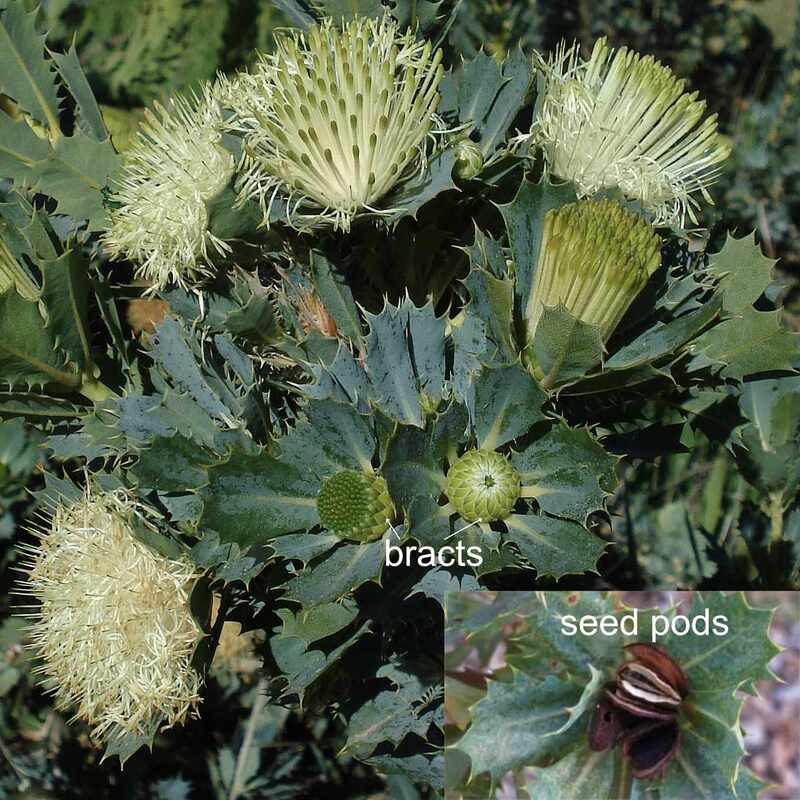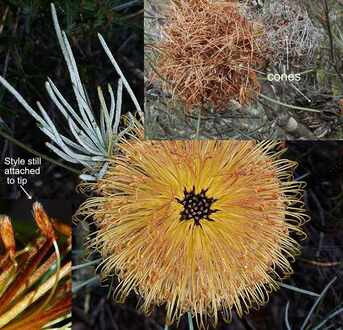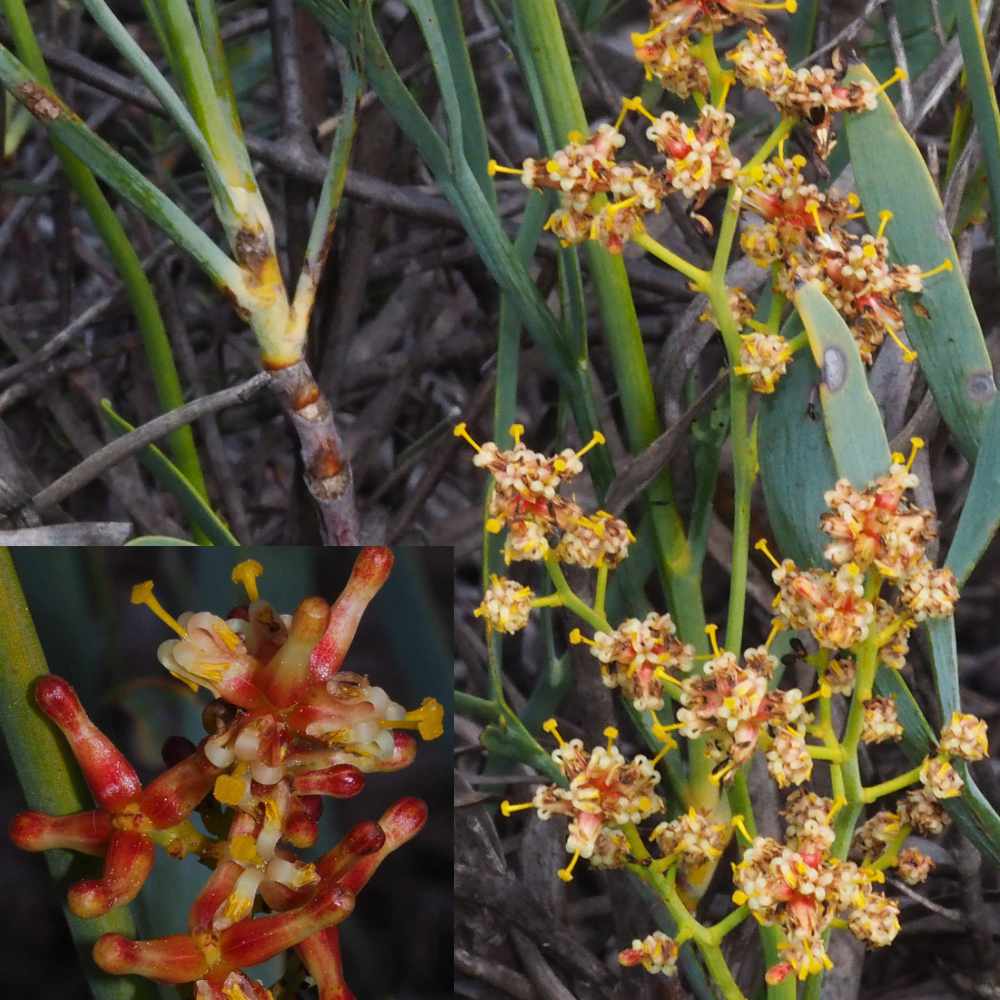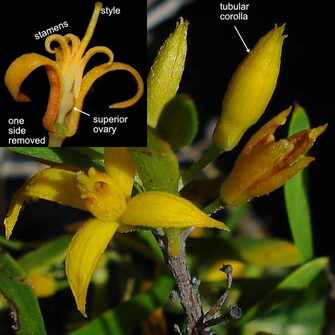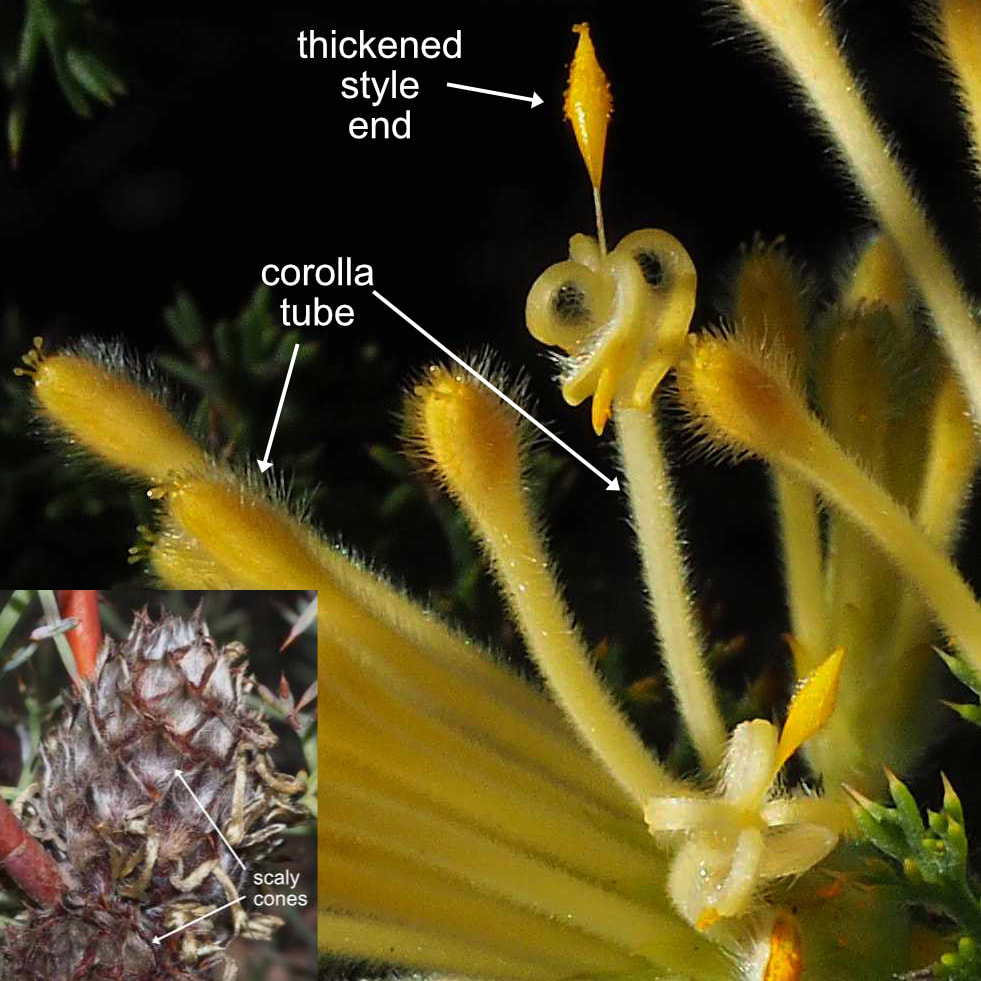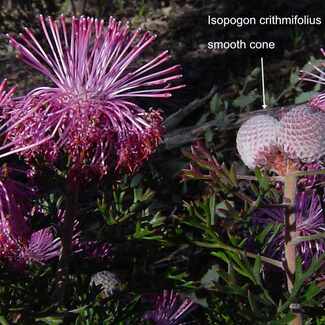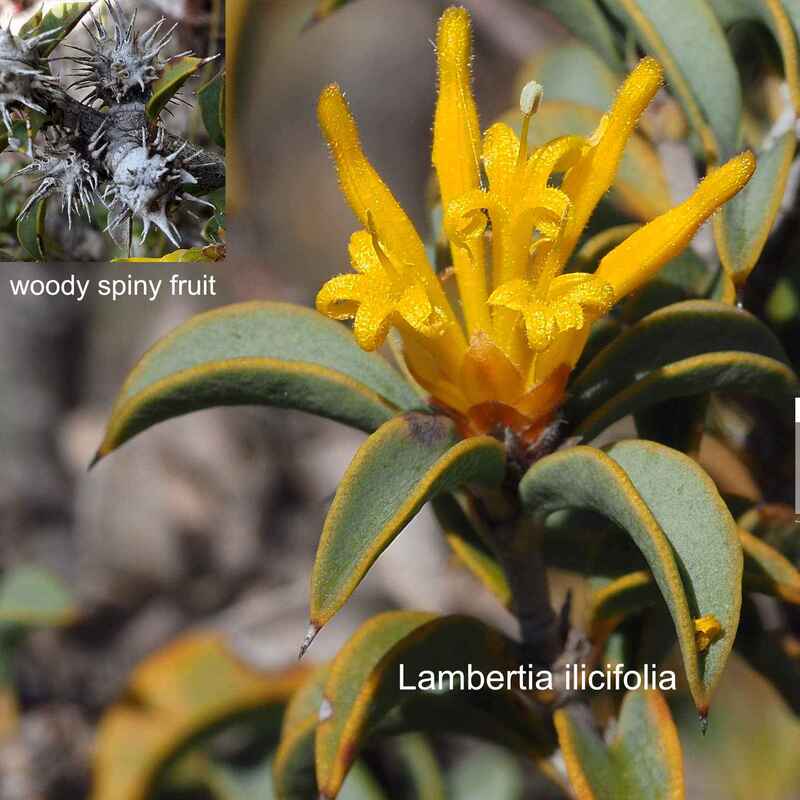| Greetings fellow Foxies, Persoonia is an unusual genus in the Proteaceae family. Local names are Geebungs in eastern states (remember Banjo Patersons' famous poem - Geebung polo club?), and snottygobbles in WA. Unlike most Proteaceae genera, persoonias do not have cluster roots. They probably have mycorrhizas like most plants. Their flowers do not have secondary pollen presentation. Stamens in the yellow flowers surrounding the style, mature first and then fold outwards out of the way. They are very fire tolerant. They germinate after fire, but and are difficult to grow from seed. |
I have been trying to taste the disgusting looking but tasty drupe for years, but haven't managed to find one at the right stage

